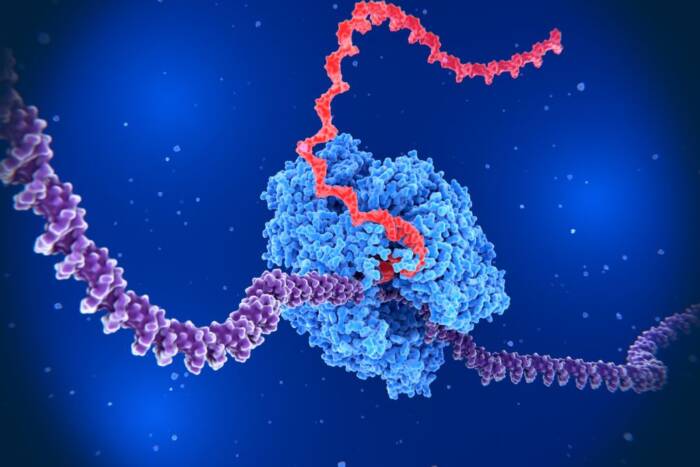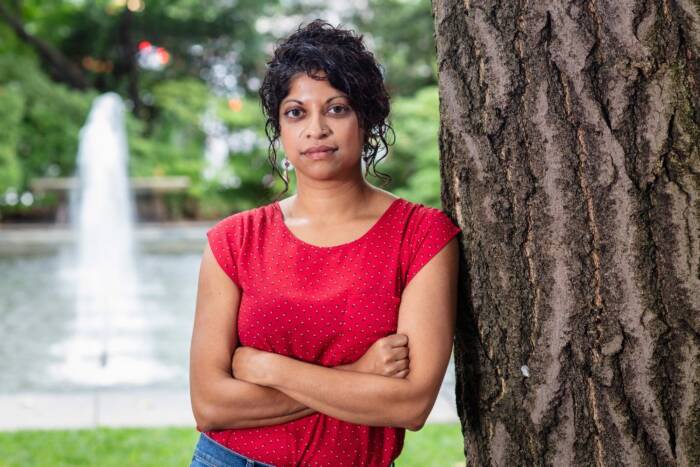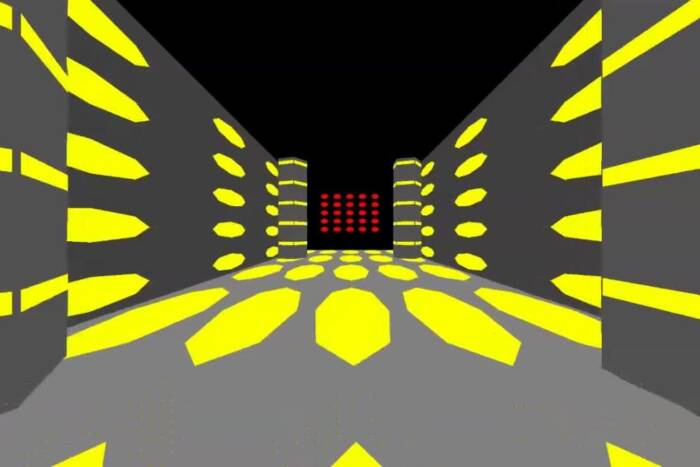'Hitchhiking' chromosomes yield new theory of cell division
From the moment the cell was discovered, scientists have been dissecting the methodical, multi-step process by which they duplicate themselves. This week, Rockefeller researchers studying one component of this process — how a cell’s chromosomes move in preparation for division — announce a discovery that overturns current cell-division theory. Their findings, presented in the cover article of the journal Science, could one day be used to create a new class of cancer therapies.
When a cell divides during a process called mitosis, it proceeds quite methodically through a number of very specific steps in order to insure that the two resulting “daughter” cells are identical to the original. When cells fail to copy themselves correctly, they can cause birth defects or cancer.
Rockefeller’s Tarun Kapoor, head of the Laboratory of Chemistry and Cell Biology, studies one step of the division process at a time. In this paper, he and Michael Lampson, a postdoctoral fellow in the lab, take a close look at how pairs of chromosomes — duplicated but still attached to each other until the cell splits — are transported to the center of the cell in preparation for division.
In a process known as biorientation, each half of an attached chromosome pair must be secured to opposite ends of the cell by microtubules before the cell splits. The result is a football-shaped mitotic spindle, with chromosome pairs lined up through the center and the microtubules’ ends converging at both poles of the elongated cell. Understanding this process can also help researchers get a better idea of how it goes awry: Dozens of different diseases result from daughter cells that have too many or too few chromosomes.
The standing theory for how chromosomes move to the center of a cell, or “congress,” held that they had to be bioriented, and the attached microtubules were responsible for pushing and pulling them into place. But now, using a unique combination of cutting-edge video microscopy, biochemistry and electron microscopy, Kapoor and Lampson found that this isn’t necessarily the case.
Although most chromosomes biorient and progress normally to the middle of a cell, occasionally some don’t. Every so often, when a cell divides, a few of its chromosomes first move toward one of the poles before heading back out to the middle. Researchers believed that these unruly chromosomes were linking to the nearest pole first and then to the far one by way of an extra-long microtubule stretching across the cell from the opposite pole. In order to determine if that really was the case, Lampson designed a way to catch errant chromosomes in the act, inducing a few chromosomes in almost every cell to go toward a pole before traveling to the middle.
“This is a key scientific advance,” Kapoor says. “We were able to use ‘candidate chemotherapy drugs’ to manipulate chromosomes in live cells.”
Then, Kapoor, Lampson and their colleagues at the Wadsworth Center in Albany, New York, used a scanning electron microscope to examine the chromosome pairs and determine their orientation. The results came as a complete surprise: “One of the chromosomes was attached the way you would expect, with a fiber attaching it to the pole,” Lampson says. Its sister chromosome, however, was not. Rather than being roped by a microtubule from the opposite pole, it was sitting atop a fiber that was attached to a separate, already bioriented chromosome to the mitotic spindle. In other words, the chromosome was hitching a ride. (See movie, above.)
If it wasn’t being pushed and pulled into place by microtubules, how was it getting there? Lampson and Kapoor believe that a little protein — a molecular motor — uses another microtubule as its track and drives the chromosome pair to the center. And they’re pretty sure they know which protein is doing the driving. “We inhibited a molecular motor called CENP-E, then tried to force chromosomes to congress to the center from the pole and asked, ‘Are they able to do that when you don’t have the motor?’ And the answer is no.” Which indicates that CENP-E is essential for moving the itinerant chromosomes to the center.
The errant chromosomes seem to be moving to the poles before congressing to the center because it gives them a higher chance of picking up a microtubule track, Lampson says. And their results help explain a long-standing mystery: the role of CENP-E. “People had been wondering about this motor for a long time. Many studies had observed that if you inhibit CENP-E, you always find that many of the chromosomes have aligned but a few get stuck at the poles, preventing mitosis,” Lampson says.
One of the key traits of cancer cells is that they divide rapidly, leading drug companies to seek out approaches that disrupt mitosis. Since CENP-E appears to be specific to cell division, inhibiting its production could be a way to prevent mitosis without affecting any other cellular activities—unlike current chemotherapies.
Science 311(5759): 299 (January 20, 2006)(opens in new window)


